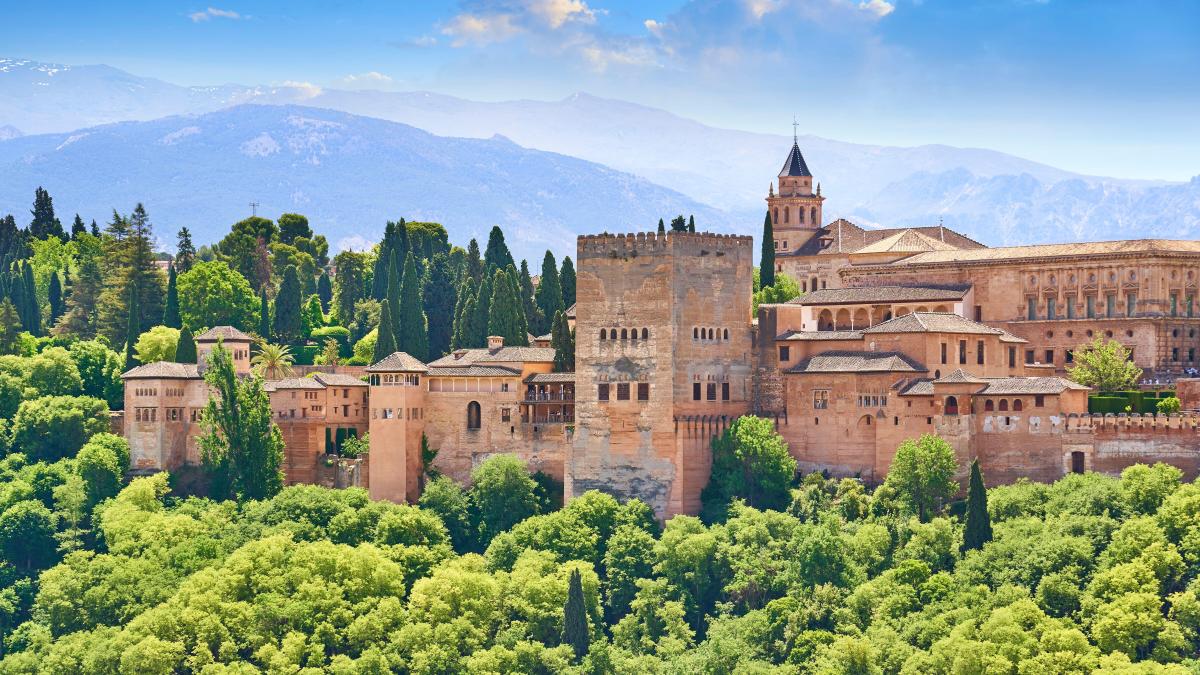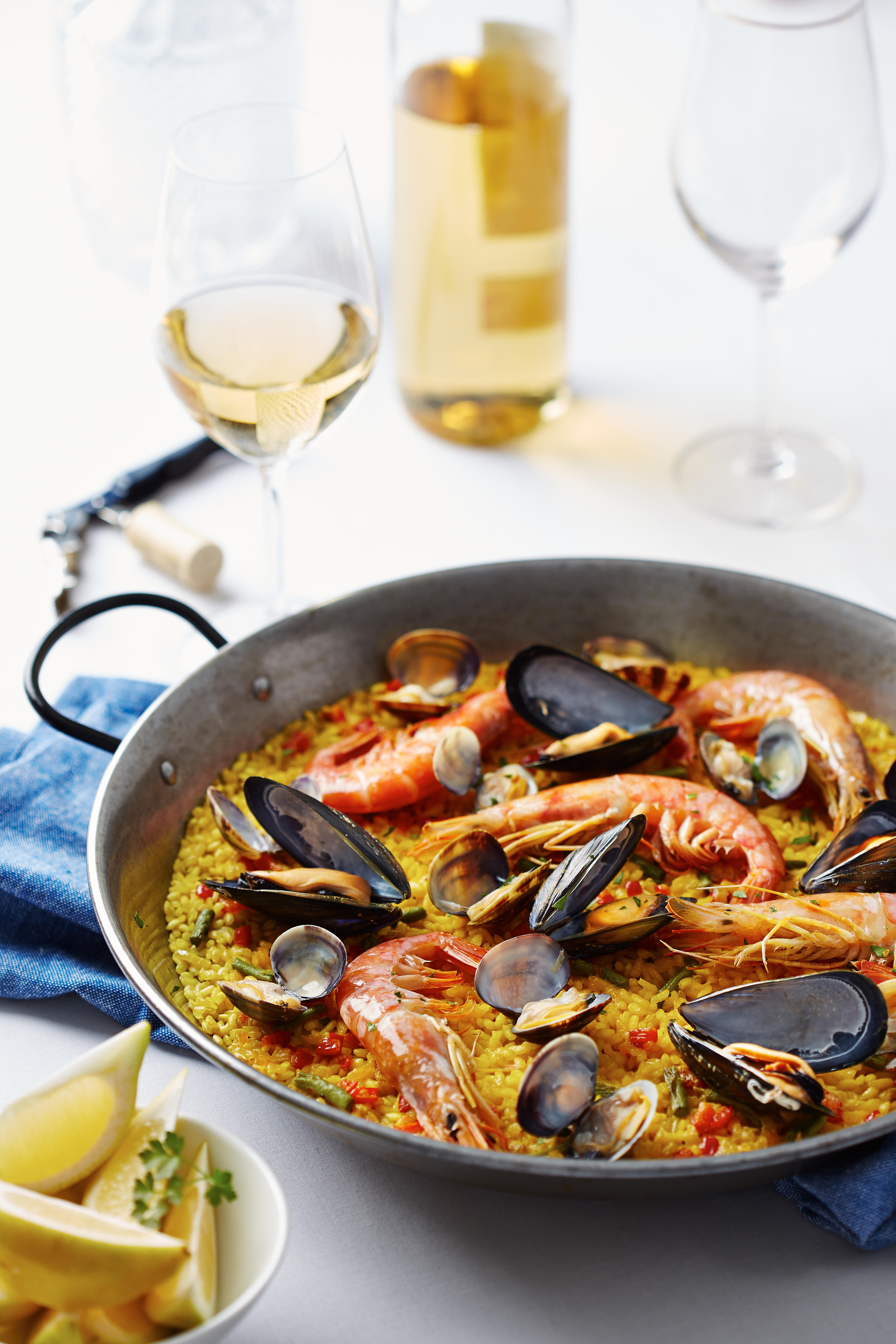The superb coastline, gastronomy and historic cities of Spain take most of its travel headlines, while less is made of another great facet of life in the country: its high-speed rail network, the most extensive in Europe (and second only to China worldwide) with more than 2,400 miles of tracks whizzing travellers across the country at up to 193mph.
While train travel in Spain was already generally more affordable than it is in the UK, a pass launched in January by Renfe, the national rail company, aims to make exploring the country by train even better value. Exclusively available to nonresidents, the Spain Rail Pass is valid on all trains for a month, with a choice of four, six, eight or ten trips.
The pass can be bought up to six months before travel and journeys must be reserved; unlike in the UK you can’t board a train without a designated seat. Prices start at £183 and the biggest savings can be made on high-speed routes, especially when traveling at popular times. You pay one price up front for high-speed trains with no additional costs for seat reservations, unlike with an Interrail pass, which could work out more expensive. The Spanish pass is valid only within the country, so you can’t cross the border into Portugal (renfe.com).
Here are three itineraries to help you to make the most of the pass.
• Read our full Spain travel guide
The ancient cities of AndalusiaMalaga — Granada — Cordoba — Seville — Malaga
A land of Moorish palaces, grand cathedrals and crowded flamenco bars, nowhere feels more quintessentially Spanish than the southern region of Andalusia. And the train is the most efficient way to pack the best bits into one trip, with high-speed routes linking all the highlights.
Start in Malaga, a city on the up that demands a couple of days’ exploration taking in its thriving food scene (the El Pimpi restaurant, owned by Antonio Banderas, is a must; mains from £9; elpimpi.com), slick waterfront with Pompidou Centre outpost and Soho district full of urban art and independent boutiques and bars. It would be remiss to visit the birthplace of Picasso without setting foot inside the museum dedicated to his work (£13; museopicassomalaga.org), and on June 1 a Cristine Bedfor hotel opens next door (B&B doubles from £209; cristinebedforhotel.com).
Malaga has a thriving food scene and a Centre Pompidou outpost
GETTY IMAGES
The fastest train from Malaga gets you to Granada in 80 minutes. It would be wise to put aside a full day here to gawp at the Alhambra, the Moorish palace (£16; alhambra.org), and another for a hammam and bar hopping, each drink coming with free tapas. With 21 opulent rooms in a historic building, the Seda Club is the best hotel option in town (B&B doubles from £350; sedaclubhotel.com).
• Most beautiful places in Spain
Head northwest by train for 90 minutes and you arrive in Cordoba, the most unhurried of the Andalusian cities, with its mind-blowing Mezquita, a 13th-century cathedral inside an 8th-century mosque (£11; mezquita-catedraldecordoba.es). Stay at least one night here — Las Casas de la Juderia wins points for its central location and pool (room-only doubles from £175; lascasasdelajuderiadecordoba.com).
The Cathedral (and former Great Mosque) of Cordoba
GETTY IMAGES
Seville is less than an hour by train from Cordoba, and you’ll need a few days in the regional capital. Don’t miss the huge gothic cathedral (£15; catedraldesevilla.es), the tiled benches and fairytale bridges of Plaza de España (free; visitasevilla.es) and the sweeping views from the top of Metropol Parasol, widely considered to be the largest wooden structure in the world (£14; setasdesevilla.com). There are also plenty of museums and galleries to check out in Seville, but just as enjoyable is sitting in a square framed by orange trees, catching a flamenco show or soaking up the sun at a rooftop bar — Hotel Fernando III has a great one (B&B doubles from £189; hotelfernandoiii.es).
The journey time from Seville back to Malaga is about two hours.
• Our guide to Interrailing: Interrailing in Europe: how it works and how to plan your trip
A foodie adventureValencia — Barcelona — Zaragoza — Pamplona — San Sebastian
Whether it’s pintxos (small bites often served on bread or skewers) at a bar, a giant pan of paella for Sunday lunch or a multicourse Michelin-starred feast, Spain takes its food seriously. If eating well is high on your priority list, this itinerary takes it all in.
Start in Valencia, the home of paella, by booking a table at the family-run Casa Carmela, where they have been serving this rice dish for four generations (from £17; casa-carmela.com). La Novieta, a new four-room hotel in a beautifully renovated modernista building, is the place to stay (room-only doubles from £148; lanovieta.com).
Valencia is the home of paella
ALAMY
Three hours north by train is Barcelona, which is having a foodie moment, with the region of Catalonia and the three-Michelin-star Disfrutar restaurant in the city taking top culinary awards (tasting menu from £270; disfrutarbarcelona.com). If you can’t get a table here, there’s a crop of other fine-dining places shaking up the food scene that are easier to book and more affordable — try Berbena (berbenabcn.com), Gresca (gresca.rest) or Ultramarinos Marin (ultramarinosmarin.com). Grand Hotel Central, with its buzzy Can Bo tapas bar, is a great accommodation option for food lovers (room-only doubles from £289; grandhotelcentral.com).
• Spain’s best cities for food
Into the Aragon region, Zaragoza is an underrated city with impressive architecture and art (it is the birthplace of Goya), as well as one of the best tapas scenes — head to El Tubo, the tangle of streets northeast of the city’s Plaza de España, and feast on plates of glossy Serrano ham, scallops in lemon butter and garlic clams. Stay at the calming Hotel Avenida (B&B doubles from £80; hotelavenida-zaragoza.com).
Gaudí’s Sagrada Família basilica in Barcelona
ALAMY
Take a train further north into the Navarre region and the medieval town of Pamplona. Here you’ll find archaeological wonders, plenty of bars serving pintxos and the Hemingway-approved Gran Hotel La Perla (room-only doubles from £130; granhotellaperla.com).
Popping between pintxo bars is also the order of the day in San Sebastian, the ultimate foodie location, with one of the highest number of Michelin stars per capita in the world. Book tables well in advance or eat your way around the old town at bars such as Nestor (@barnestor1980), Aita Mari (aitamari.com) and La Cepa (barlacepa.com), before resting at Nobu San Sebastian, on Ondarreta beach (B&B doubles from £255; nobuhotels.com).
Off the beaten track Madrid — Oviedo — Leon — Salamanca — Segovia — Madrid
The northwestern provinces of Spain have largely been overlooked by international travellers but this is a part of the country rich in history and culture. This circular tour starts in the capital, taking advantage of the high-speed rail line between Madrid and Oviedo launched in 2023. Trains on this route reach the Asturian capital in a little more than three hours, and this small yet characterful city, with its pastel buildings and pretty squares, is a lovely place in which to spend time. There’s also an impressive fine-art museum and the chance to try the much-loved local cider, cheese and pork — Mercado El Fontan is a good place to start (mercadofontan.es). Stay at the stylish Barcelo Oviedo Cervantes (room-only doubles from £88; barcelo.com).
Oviedo is a small, characterful city on the Camino de Santiago pilgrimage
GETTY IMAGES
Take a train south from Oviedo and you can be in Leon in about an hour. It is well worth pausing in this city, a significant stop on the Camino de Santiago pilgrimage, for a couple of nights, especially to see its striking gothic cathedral (£6; catedraldeleon.org) and the Casa Botines museum, one of the few Gaudí-designed buildings outside Catalonia, dedicated to the architect and Spanish art from the 19th and 20th centuries (£8; casabotines.es). Stay at the Parador de Leon, a 12th-century convent reimagined with avant garde touches and a notable art collection (room-only doubles from £180; paradores.es).
Unesco-listed Segovia is north of Madrid
GETTY IMAGES
Traveling further south, back towards Madrid, the Unesco-listed old towns of Salamanca and Segovia make for worthwhile stops. The golden stone buildings of Salamanca give the city a magical quality, with its Plaza Mayor often touted as one of the most beautiful squares in Spain (salamanca.es), while Segovia has its Alcazar palace (£9; alcazardesegovia.com). In Salamanca stay at Palacio de San Esteban, housed in a beautiful old monastery (room-only doubles from £180; hospes.com). In Segovia choose Parador de Segovia, offering panoramic city views (B&B doubles from £105; paradores.es).
Become a subscriber and, along with unlimited digital access to The Times and The Sunday Times, you can enjoy a collection of travel offers and competitions curated by our trusted travel partners, especially for Times+ members






